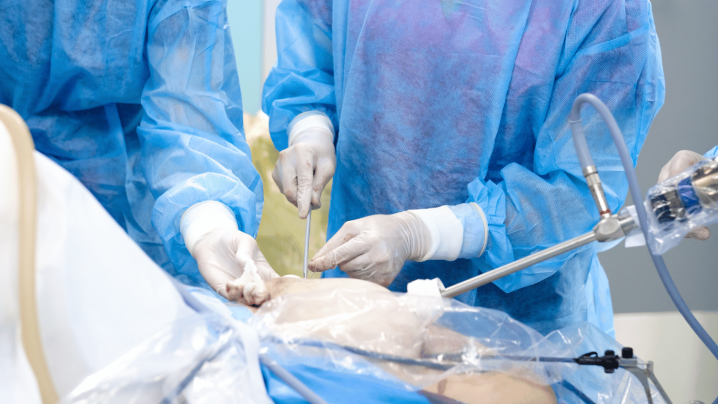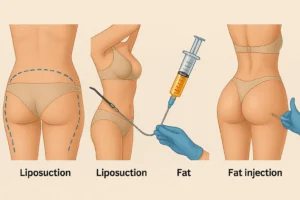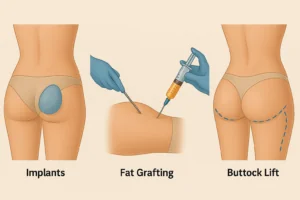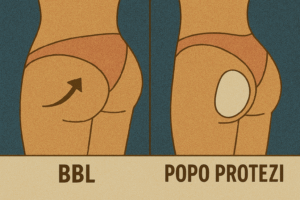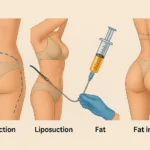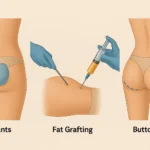Laparoscopic surgery is one of the most important developments in modern medicine. This minimally invasive surgical technique offers many advantages over traditional open surgery. In this article, we will examine in detail what laparoscopic surgery is, how it is performed and the advantages it offers.
What is Laparoscopic Surgery?
Laparoscopic surgery, also known as "keyhole surgery", is a minimally invasive surgical technique performed through small incisions in the body. In this method, special instruments and a camera (laparoscope) are inserted through small incisions in the abdomen. The surgeon performs the operation by watching the camera's image on a monitor.
History of Laparoscopic Surgery
The roots of laparoscopic surgery date back to the early 20th century. However, laparoscopic surgical techniques in the modern sense began to be developed in the late 1980s.
- 1901: Georg Kelling performed the first laparoscopic procedure on a dog.
- 1910: Hans Christian Jacobaeus performed the first laparoscopic operation in humans.
- 1980s: With advances in video technology, modern laparoscopic surgery techniques emerged.
- 1987: Phillipe Mouret performed the first laparoscopic cholecystectomy (gallbladder surgery).
Application Areas of Laparoscopic Surgery
While laparoscopic surgery was initially used only for diagnostic purposes, today it is preferred in many different surgical procedures. Here are some areas where laparoscopic surgery is widely used:
- General Surgery
- Cholecystectomy (gallbladder surgery)
- Appendectomy (appendicitis surgery)
- Hernia repair (hernia surgery)
- Gastrectomy (stomach surgery)
- Gynecological Surgery
- Hysterectomy (removal of the uterus)
- Ovarian cyst surgery
- Endometriosis treatment
- Urological Surgery
- Nephrectomy (kidney removal)
- Prostatectomy (prostate removal)
- Bariatric Surgery
- Gastric bypass
- Sleeve gastrektomi
- Thoracic Surgery
- Lung biopsy
- Treatment of pneumothorax
- Orthopedic Surgery
- Joint surgery (e.g. knee and shoulder)
Advantages of Laparoscopic Surgery
Laparoscopic surgery offers many advantages over traditional open surgery. These advantages are important for both the patient and the healthcare system.
1. Less Pain and Discomfort
Because laparoscopic surgery requires smaller incisions, patients usually experience less pain and discomfort. This reduces the need for painkillers in the postoperative period and allows the patient to have a more comfortable recovery.
2. Shorter Hospital Stay
Due to its minimally invasive nature, patients undergoing laparoscopic surgery can often be discharged sooner. This not only allows the patient to return to their own environment more quickly, but also allows for more efficient use of hospital resources.
3. Faster Recovery and Return to Normal
Small incisions and less tissue damage allow the body to heal faster. Patients can usually return to their daily activities and work sooner.
4. Less Bleeding
The small incisions and precise manipulation techniques during laparoscopic surgery minimize blood loss during surgery. This provides a safer surgical experience and reduces the need for blood transfusions.
5. Less Risk of Infection
Small incisions significantly reduce the risk of infection. In addition, less exposure of the body's internal organs to the external environment also reduces the chance of infection.
6. Better Cosmetic Results
The small incisions made in laparoscopic surgery leave minimal scar tissue. This is an important advantage, especially for patients with aesthetic concerns.
7. More Detailed Viewing
Laparoscopic cameras allow surgeons to see structures inside the body in magnified and high resolution. This allows for more precise and accurate surgical interventions.
8. Less Risk of Complications
Due to its minimally invasive nature, laparoscopic surgery generally carries less risk of complications. In particular, risks such as wound site complications and adhesion formation are reduced.
9. Cost Effectiveness
Although initial costs are high, laparoscopic surgery is cost-effective in the long term. Shorter hospital stays, fewer complications and faster recovery reduce overall healthcare costs.
Laparoskopik Cerrahinin Zorlukları ve Sınırlamaları
Although it offers many advantages, laparoscopic surgery also has some challenges and limitations:
1. Learning Curve
Laparoscopic surgery techniques require different skills than traditional open surgery. It can take time for surgeons to learn and master these techniques.
2. Technical Challenges
Some complex procedures can be difficult to perform laparoscopically. In particular, working in deep and narrow spaces can create technical difficulties.
3. Equipment Costs
Laparoscopic surgical equipment is often expensive and requires regular maintenance. This can be a challenge, especially for resource-strapped health systems.
4. Limited Tactile Feedback
Because surgeons work through laparoscopic instruments, they do not receive direct tactile feedback. This can create difficulty with some delicate procedures.
5. Long Operation Times
In some cases, especially in complex procedures, laparoscopic surgery may take longer. However, this time usually shortens as the surgeons' experience increases.
The Future of Laparoscopic Surgery
Laparoscopic surgery techniques are constantly evolving and advancing. Here are some exciting developments for the future of laparoscopic surgery:
1. Robotik Cerrahi
Robotik sistemler, laparoskopik cerrahinin hassasiyetini ve kabiliyetini daha da artırmaktadır. Da Vinci Cerrahi Sistemi gibi robotik platformlar, cerrahlara daha iyi kontrol ve 3D görüntüleme sağlar.
2. Single Incision Laparoscopic Surgery
This technique is performed by passing all instruments through a single incision. This further improves the cosmetic results and potentially shortens the recovery time.
3. Natural Orifice Transluminal Endoscopic Surgery (NOTES)
This innovative technique aims to perform surgical procedures using natural openings in the body. This could potentially eliminate the need to make external incisions altogether.
4. Augmented Reality and Virtual Reality
These technologies can help surgeons with pre-operative planning and navigation during surgery. Augmented reality allows surgeons to overlay virtual information on real-time images.
5. Artificial Intelligence and Machine Learning
These technologies can support surgeons in areas such as surgical planning, intraoperative decision making and postoperative care.
Conclusion
Laparoscopic surgery is one of the most important advances in modern medicine. Its minimally invasive nature offers patients many advantages: less pain, faster recovery, better cosmetic results and lower risks of complications. Although it has some challenges and limitations, laparoscopic surgical techniques are constantly evolving and advancing.
In the future, with the integration of technologies such as robotic systems, augmented reality and artificial intelligence, laparoscopic surgery is projected to further evolve and become the standard approach for more procedures. These advances will enable patients to achieve better outcomes and surgeons to perform more complex procedures more safely and effectively.
In conclusion, laparoscopic surgery has become an indispensable part of modern medicine and will continue to revolutionize the field of surgery in the future. With its advantages for patients and healthcare professionals, laparoscopic surgery plays an important role in improving the quality and accessibility of medical care.


